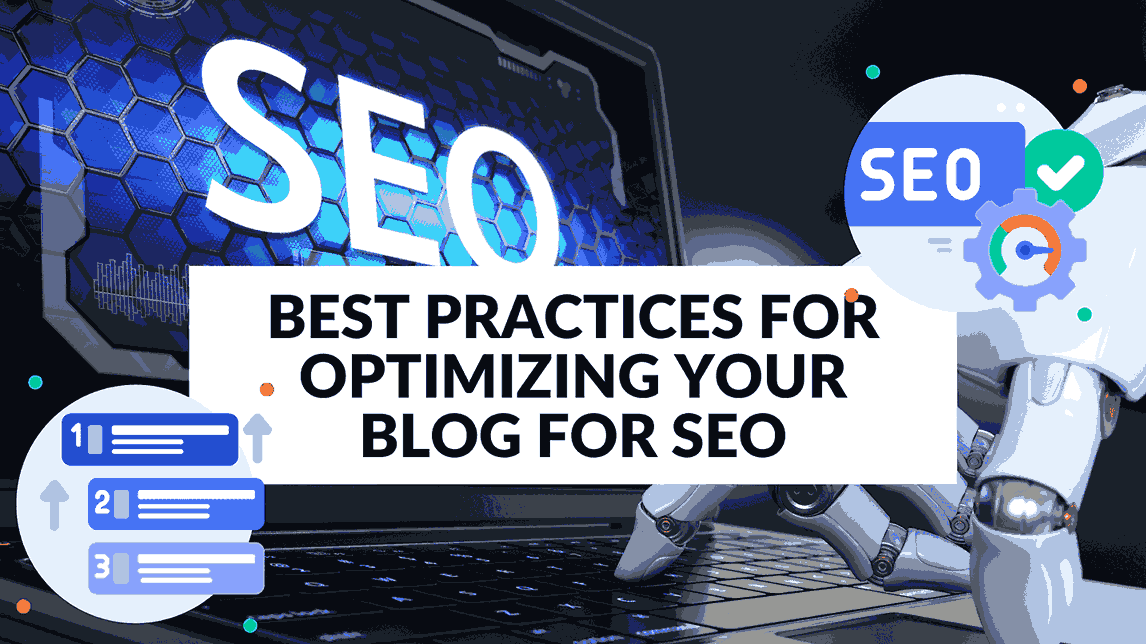Best Practices for Optimizing Your Blog for SEO
- WebOps Platforms Bug Tracking & Feedback Software Web Development & Design


Best Practices for Optimizing Your Blog for SEO
Climbing the search engine ladder with a blog requires a bit more than just hitting publish on your posts. To show up among those first results, you will first need to get acquainted with this crucial acronym: SEO, or search engine optimization. This simply means making your website easily readable and accessible by search engine bots so that your pages show up for a relevant search. What’s more, your blog content needs to be updated, and contain unique, useful information readers can’t find elsewhere.
Whether you’re creating a blog or adding a blog section as you work out how to make your website, below are the ultimate blog SEO tips.
What is Blog SEO and Why Is It So Important?
Search engines find, audit, and present blog posts to those looking for them. If your content is the most fitting, informative, and in-depth, it’s likely your blog, or any type of website, will be shown on the SERP (search engine results page). For more in-depth information on Blog SEO, you can explore this detailed guide on Databox.
By optimizing your blogs for SEO, you can:
- Gain Site Authority
- Increase Visibility
- Boost Site Traffic
- Generate More Leads
Blog SEO Tips
1. Find the Right Topics
Many avid writers with established blog sites have already covered the topics about your industry. So, how can you make sure your blog posts stand out on search engines? Research and intent. We also recommend getting familiar with semantic SEO. For further insights on finding the right topics, check out this article on Marketing Insider Group.
- Identify the Target Audience for Your Blog: Focus your blog on just a few topics that address your target audience’s needs, pain points, and questions. For real-world examples, you can explore blogs on Wpbeginner.
- Do Thorough Keyword Research: Target niche keywords in your expertise to find the best topics to write about. Choose long-tail keywords that have a solid amount of search volume. For helpful tools to conduct keyword research, visit SEMrush.
- Look at the Intent: Make sure your content aligns with what Google believes the searcher is looking for. To understand the intent better, you can refer to this blog by HubSpot.
- Conduct Competitive Research: Study your competitors to figure out how to improve your content beyond what already ranks. This idea is often referred to as “10x content,” and you can learn more about it on Moz.
2. Choose SEO-Friendly Blog Formats
To outrank the competition, consider blog formats that communicate helpful information, such as listicles, tutorials, in-depth “how to” guides, infographics, expert round-up posts, case studies, and beginner “what is” posts.
Write evergreen content that addresses keywords people search for all year long, also known as “evergreen” topics. Not only will these bring steady traffic to your site, you also won’t need to update it as frequently. For more insights on evergreen topics, explore this blog on Databox.
3. Optimize Your Posts
Include your article’s main keyword in the post title, the first paragraph, the SEO title, the SEO description, the URL, and a few times within the post. However, remember to write for people, not just search engines, and avoid keyword stuffing.
4. Structure Your Content
A well-structured blog post is crucial for SEO. Use HTML headings (H1, H2, H3, etc.) to provide hierarchy to your content. This makes it easier for search engines and readers to understand your content.
Aim for the featured snippet position by organizing your H2 titles with clear subheadings. This helps search engine bots pull and summarize them into a featured snippet, increasing your chances of ranking there.
5. Incorporate Rich Media
Add rich media like videos or podcasts to your blog posts. This keeps readers engaged for longer, lowers bounce rates, and improves click-through rates. For further information on incorporating rich media, explore the study by Search Engine Journal.
6. Add Alt Text to Images
Describe your images with alt text to help search engines understand and index them. Alt text also makes your images discoverable on Google Image Search, driving more traffic to your website. Learn more about adding alt text to images on Wix.
7. Link Internally
Internal linking is essential for helping search engines discover all of your site’s pages. It also enhances the user experience by allowing visitors to navigate your site more freely. Use descriptive anchor text when linking to an internal blog post to provide context.
8. Be Mobile-Friendly
Optimize your blog for mobile devices as Google uses the mobile version to rank sites. Mobile-optimized blogs get an extra SEO boost.
9. Post Frequently
Posting regularly can greatly impact blog SEO. Create a posting schedule to keep your content fresh and provide more opportunities for your pages to rank. Consider inviting guest writers or hiring freelancers to help maintain a consistent posting frequency.
10. Engage on Social Media
Sharing your blog posts on social media increases your content’s reach and demonstrates social signals to search engines, which can positively impact your blog’s SEO. Encourage readers to share your posts by adding share buttons and promote your content on your own social channels. For more information on the power of social media in SEO, explore this blog on HubSpot.





